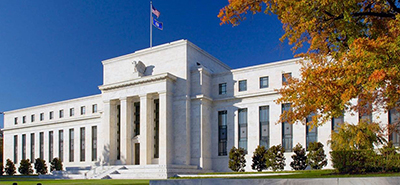
Fed Brings Out the Big Guns

Following weeks of gloomy economic news and rising inflation, the Federal Open Market Committee pulled out nearly all the stops on Wednesday, hiking the federal funds rate by 75 basis points for the first time in nearly 30 years.
The FOMC raised the federal funds rate to 1.5-1.75 percent, its biggest single hike since 1994. And it indicated that until inflation gets under control, more such hikes are likely in the coming months.
“Inflation remains elevated, reflecting supply and demand imbalances related to the pandemic, higher energy prices, and broader price pressures,” the FOMC said in its policy statement. “[The Committee] anticipates ongoing increases in the target range will be appropriate.”
“The Federal Reserve is racing to catch up to economic events,” said Mike Fratantoni, Chief Economist with the Mortgage Bankers Association. “A federal funds target rate likely to reach almost 4 percent by the end of 2023 should be effective in slowing the economy and ultimately bringing down inflation.”
Additionally, Fratantoni said the ongoing reduction in the size of the Fed’s balance sheet, including its holdings of mortgage-backed securities, is another factor putting upward pressure on mortgage rates.
“The housing market has slowed considerably over the past month as rate increases have taken hold,” Fratantoni said. “We expect that this slower pace will remain through the summer, but buyers could return later this year if the Fed’s plans are better understood by the market and lead to less rate volatility.”
“The change in course is a consequence of accelerating inflation pressures, as CPI data showed an annual 8.6% increase in May, compared with 8.3% in April,” said Mark Fleming, Chief Economist with First American Financial Corp., Santa Ana, Calif. “This is a recently unprecedented increase, but not all that surprising because the policy rate, as Chairman [Jerome] Powell just acknowledged in the press conference, is still well below that magical neutral rate.”
The full FOMC statement appears below:
“Overall economic activity appears to have picked up after edging down in the first quarter. Job gains have been robust in recent months, and the unemployment rate has remained low. Inflation remains elevated, reflecting supply and demand imbalances related to the pandemic, higher energy prices, and broader price pressures.
“The invasion of Ukraine by Russia is causing tremendous human and economic hardship. The invasion and related events are creating additional upward pressure on inflation and are weighing on global economic activity. In addition, COVID-related lockdowns in China are likely to exacerbate supply chain disruptions. The Committee is highly attentive to inflation risks.
“The Committee seeks to achieve maximum employment and inflation at the rate of 2 percent over the longer run. In support of these goals, the Committee decided to raise the target range for the federal funds rate to 1‑1/2 to 1-3/4 percent and anticipates that ongoing increases in the target range will be appropriate. In addition, the Committee will continue reducing its holdings of Treasury securities and agency debt and agency mortgage-backed securities, as described in the Plans for Reducing the Size of the Federal Reserve’s Balance Sheet that were issued in May. The Committee is strongly committed to returning inflation to its 2 percent objective.
“In assessing the appropriate stance of monetary policy, the Committee will continue to monitor the implications of incoming information for the economic outlook. The Committee would be prepared to adjust the stance of monetary policy as appropriate if risks emerge that could impede the attainment of the Committee’s goals. The Committee’s assessments will take into account a wide range of information, including readings on public health, labor market conditions, inflation pressures and inflation expectations, and financial and international developments.
“Voting for the monetary policy action were Jerome H. Powell, Chair; John C. Williams, Vice Chair; Michelle W. Bowman; Lael Brainard; James Bullard; Lisa D. Cook; Patrick Harker; Philip N. Jefferson; Loretta J. Mester; and Christopher J. Waller. Voting against this action was Esther L. George, who preferred at this meeting to raise the target range for the federal funds rate by 0.5 percentage point to 1-1/4 percent to 1-1/2 percent. Patrick Harker voted as an alternate member at this meeting.”
